Qazvin Chehel Sotun Palace
A Captivating Glimpse into Persian Architectural Splendor

When we hear the name Chehel Sotoun, the magnificent Chehel Sotoun Palace in Isfahan often comes to mind. However, it’s fascinating to learn that a splendid and noteworthy mansion by the same name exists in Qazvin Province, boasting a history several decades older than its Isfahan counterpart. The Chehel Sotoun Palace in Qazvin, also known as the Kolah Farangi Mansion, showcases an octagonal structure and stands as a significant monument from the Safavid era. Join us on SURFIRAN as we explore the richly decorated Chehel Sotoun of Qazvin, a relic from the time when this city served as Iran’s capital.
Contents
History
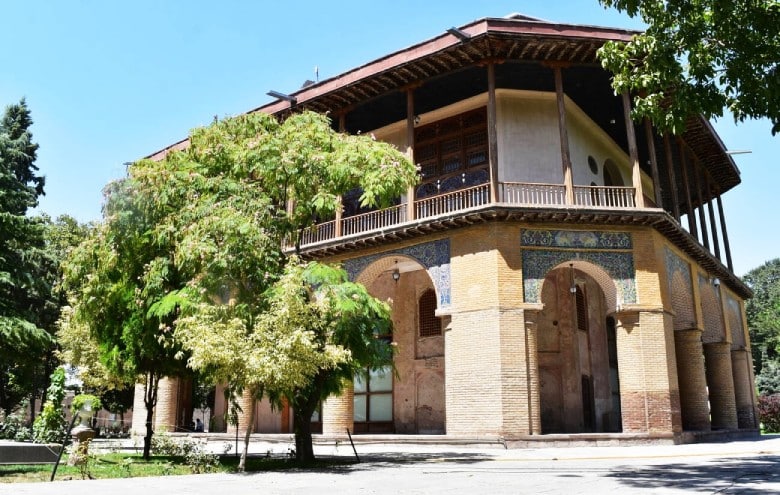
Shah Tahmasb decided to move the capital from Tabriz to Qazvin to distance it from the Ottoman Empire’s reach. This shift sparked the construction of magnificent structures in the city, including the Chehel Sotoun Palace. Mohammad Bagher Sa’d al-Saltaneh later renovated the mansion during the Qajar era. Unfortunately, the Kolah Farangi Mansion is the only remaining royal palace from Shah Tahmasb’s time.
Experts estimate the mansion’s construction dates back to the fifth year of Shah Abbas II‘s reign. At that time, the Safavid government center, known as Dowlatkhaneh Safavi, saw the construction of 23 palaces and 7 gates, with Chehel Sotoun Qazvin and Ali Qapu’s gate being the sole survivors through history, despite showing signs of aging.
Architectural Features
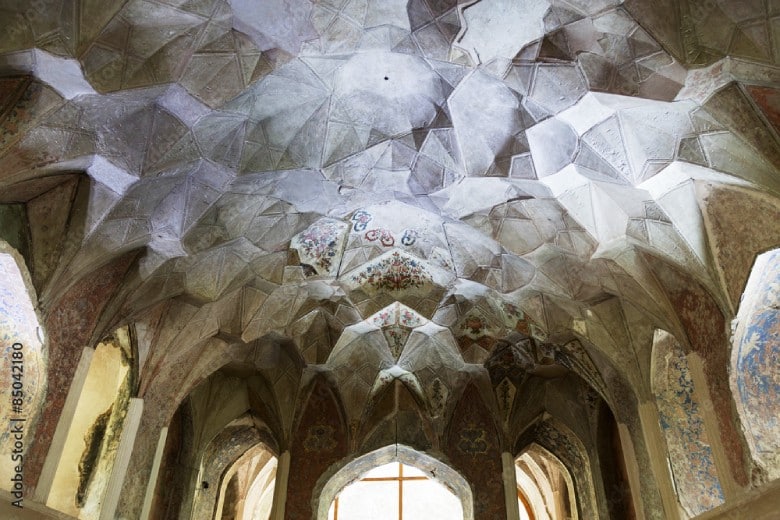
The building’s geometric shape is octagonal and two-storied, covering an area of 500 square meters. Considering the era and the dignitaries residing in the palace, emergency exits were planned through underground tunnels connecting to the Safavid government complex and beyond the city limits. Much of the mansion’s vast garden has been lost to urban development, with parts now transformed into Sabzeh Meydan Park.
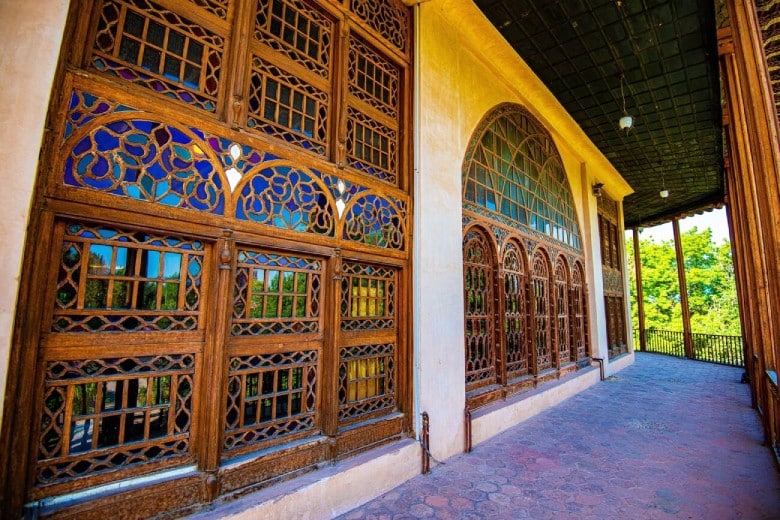
Stunning orosi windows with colorful glasses depict the four seasons. These glasses, imported from Germany, function like modern reflective windows, allowing visibility from the inside out during the day while preventing outside views into the building. The garden once flourished with fruit trees, surrounded by four long, tree-lined avenues. A beautiful marble fountain graces the building’s center, with the northern staircase, now used as the main entrance, originally brick-paved but later renovated with marble.
Artistic Beauty
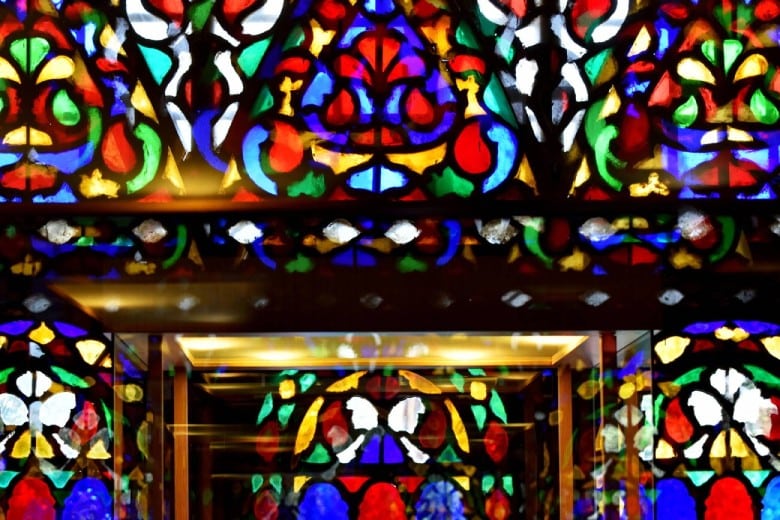
The first floor’s walls feature unique paintings that represent the characteristics of their era. Although the exact number of paintings and artists remains unclear, works by Mirza Ali, Mozaffar Ali, Ali Asghar Kashani, Abdul Jabbar Osturabad, and Reza Abbasi are believed to adorn the walls. These Qazvin paintings narrate historical events and the passage of time, including the rise to power of Nader Shah and the Qajars. Regrettably, the Pahlavi era’s use of the building as a governorate and subsequent plasterwork inflicted considerable damage on these artworks.
Qazvin Calligraphy Museum
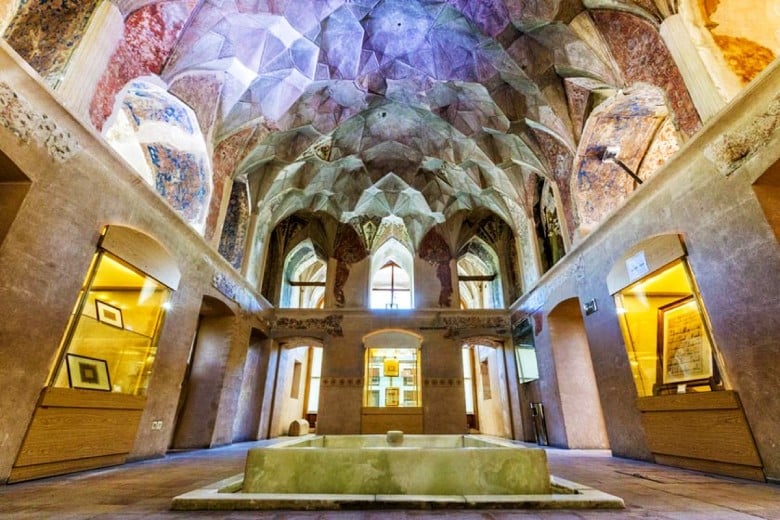
Today, the mansion serves as the Qazvin Calligraphy Museum, reflecting the city’s status as the capital of Iranian calligraphy. The museum houses works primarily in Nastaliq and Broken Nastaliq scripts, collected from across Iran with the help of personal collectors and calligraphy masters. Presently, the museum showcases over 2,200 pieces, including the oldest calligraphic work from the Seljuk period, featuring the Surah Al-Fatiha written in Kufic script.
BOOK ONLINE
Iran Hotels Online
Conclusion
The Chehel Sotoun Palace in Qazvin was registered as a national historical monument in February 1955. It has since transitioned to a treasure trove of historical and archaeological artifacts. Currently, it operates as the Qazvin Calligraphy Museum.
Admission fees apply for entrance to the palace. The Chehel Sotoun Palace and Museum are open from 9 AM to 6 PM, except on official mourning days.
Location: City center of Qazvin, south of Sabzeh Meydan (Azadi Square).
For a deeper dive into the cultural heritage of Iran and to plan your visit to the Chehel Sotoun Palace in Qazvin, explore our offerings at SURFIRAN and OrientTrips.
Read More



